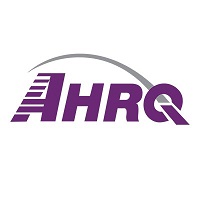 By David Meyers, M.D., Deputy Director, AHRQ & Brent Sandmeyer, M.P.H., Healthcare & Climate Research Grants Program Officer
By David Meyers, M.D., Deputy Director, AHRQ & Brent Sandmeyer, M.P.H., Healthcare & Climate Research Grants Program Officer
Twitter: @AHRQNews
Climate change is widely regarded as the number one threat to human health, increasing the destructive power of storms like Hurricane Ian and the frequency and duration of heatwaves, wildfires, and droughts. Healthcare systems and providers are increasingly working on the front lines in response to these emergencies.
But the healthcare industry is also a significant contributor to the climate change crisis. Up to 10 percent of U.S. greenhouse gas emissions driving climate change can be attributed to the energy impacts of healthcare-related buildings and transportation, anesthetic gas, pharmaceuticals and chemicals, medical devices and supplies, and food.
On Earth Day 2022, the U.S. Department of Health and Human Service’s Office of Climate Change and Health Equity and the White House called on healthcare systems and their suppliers to reduce emissions by 50 percent by 2030. Committing to such a goal is bold; cutting emissions in half in less than 10 years is not an easy task.
Inaction, however, is not an option.
Recognizing that many health systems are just taking initial steps to measure, control, and reduce their emissions, AHRQ partnered with the Institute for Healthcare Improvement to convene academic and industry leaders to create Reducing Healthcare Carbon Emissions: A Primer on Measures and Actions for Healthcare Organizations to Mitigate Climate Change.
The new AHRQ primer serves as an action guide for healthcare systems to begin reducing greenhouse gas emissions. It offers strategies that organizations may use to prioritize decarbonizations goals, manage new initiatives, and monitor progress. These are not theoretical actions. Throughout the primer, there are real-world examples of healthcare organizations that have set aggressive goals and made huge strides toward cutting emissions [Watch a webinar introducing the primer here].
Reducing carbon emissions is not just a health and environmental imperative—it’s simply good business. Increasing energy efficiency of buildings, equipment, and processes can result in significant ongoing cost savings, especially in times of high energy prices. Developing alternative local energy sources can reduce energy bills and increase resilience in the face of power outages that would otherwise result in service disruptions. Taking on carbon emissions can even help with recruitment and retention, with nearly seven in 10 workers reporting that organizations’ environmental actions are a factor in their decision to work there.
Momentum is growing to reduce healthcare’s carbon footprint. The recently enacted Inflation Reduction Act provides billions of dollars for organizations to become more energy efficient and make the transition to clean energy, so there has never been a better time to take action. Many organizations have signed the HHS Climate Pledge to signal their commitment to action. Others, including AHRQ, have joined aligned efforts such as the National Academy of Medicine’s Action Collaborative on Decarbonizing the U.S. Health Sector to develop and share best practices for driving change.
AHRQ’s new primer shows that such action is possible, providing pathways forward and examples of healthcare systems across the country achieving lower emissions, cost savings, and greater resilience to climate threats. Please let us know how your organization is using the new primer, how it could be improved, and what other resources and support would be helpful going forward at ClimateChange@ahrq.hhs.gov.
This article was originally published on AHRQ Views Blog and is republished here with permission.
